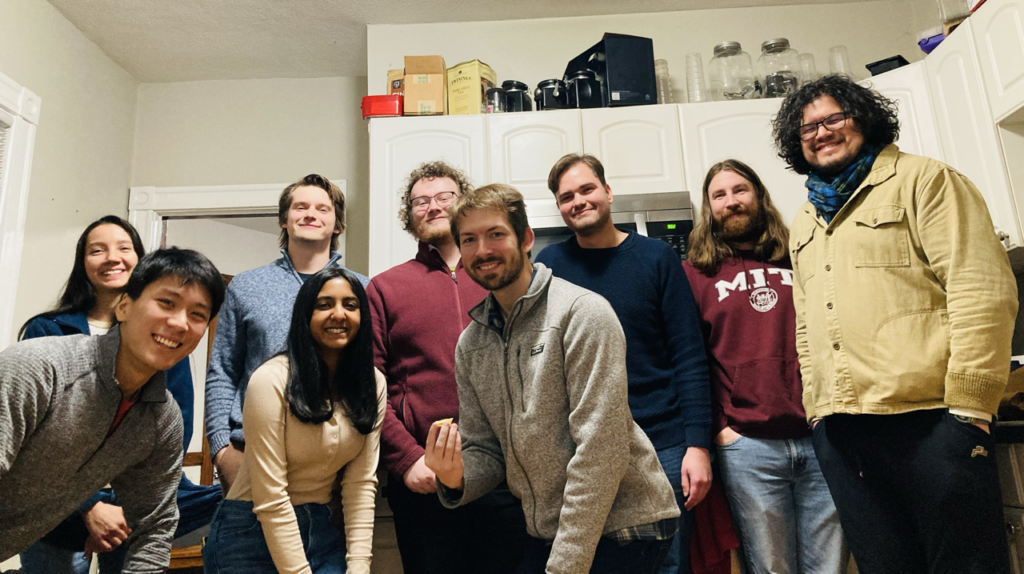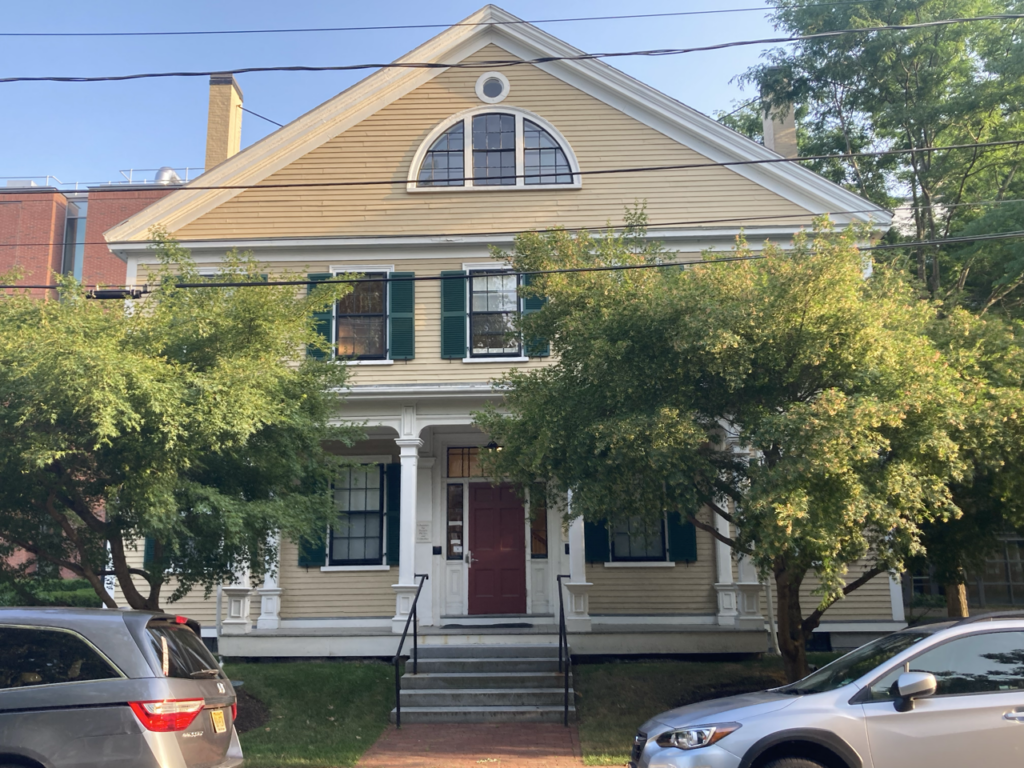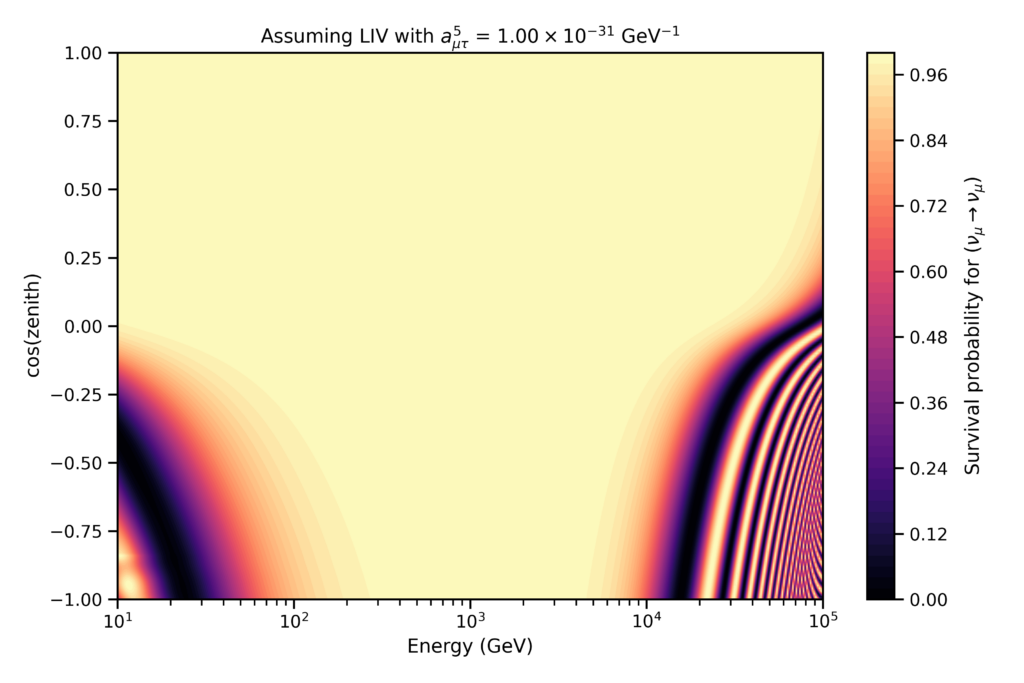Research Stay at Harvard University: Searching for Lorentz Invariance Violation in neutrino telescope data
Hi, I’m Lukas, and I have been studying in the “Physics Advanced” program in Erlangen since the winter semester 2018/19! I am currently doing my PhD at the Erlangen Centre for Astroparticle Physics (ECAP), where I work on a search for Lorentz invariance violation using data collected by several neutrino telescopes. As part of these efforts, I was allowed to stay in the neutrino group at Harvard University for the second half of 2024, which was made possible thanks to the support of both the “Physics Advanced” program as well as the DAAD via a “Forschungsstipendien für Doktorandinnen und Doktoranden” scholarship.
Applying for a Research Stay at Harvard
The DAAD “Forschungsstipendien für Doktorandinnen und Doktoranden” scholarship provides PhD students with funding to conduct research abroad. It offers three application windows per year, with selections made approximately three months later. If successful, recipients can begin their research stay three months after the selection decision.
I applied in November 2023, at the beginning of my PhD. The application required several documents, including:
- A motivation letter outlining my research goals,
- A curriculum vitae (CV),
- An extensive research proposal (5-8 pages) detailing my PhD project,
- A recommendation letter from my PhD supervisor,
- And a few additional supporting documents.
I was fortunate to be selected for the scholarship and began my research stay in mid-July 2024. To enter the U.S., I needed a J1 student visa, which normally requires an interview at the U.S. consulate in Munich. Luckily, I was allowed to skip it since I already had completed such an interview in 2021. The DAAD provided financial support, including an insurance package and a monthly stipend to cover living expenses. Additionally, I received support from the Physics Advanced program, which covered my flights.
My experience with the DAAD has been very positive, both during this stay at Harvard and my previous research stay in Hawaii in 2021, about which I have written a similar report on this website. I highly recommend this program for PhD students as well as the RISE Worldwide program for Bachelor students if you are interested in pursuing international research opportunities.
Living and Working in Boston/Cambridge
Finding accommodation near Harvard can be quite expensive, especially for short-term stays. To keep costs manageable, I opted for a place a bit farther out – a shared house booked via Airbnb. I lived with three to four other people, most of whom were students, which was very helpful especially in the beginning of the stay.
Both Boston and Cambridge, particularly the areas around Harvard, offer plenty of opportunities to meet people, engage in sports, and enjoy the city’s nightlife. Whether through university events, public parks, or the many cafés and bars, there’s always something happening, making it easy to connect with others.

Photo with members of Carlos’ group, other visitors, and a colleague from MIT. Carlos is on the right, and I am the third person from the right.
For my research, I worked in the neutrino physics group of Professor Carlos Argüelles-Delgado. The group is based in Palfrey House, located north of the main Harvard campus. Originally built in 1831 as a residence for John Gorham Palfrey, Harvard Divinity School’s first dean, the building now houses the Laboratory for Particle Physics and Cosmology.

Palfrey House
My research
Lorentz Invariance Violation and Neutrino Telescopes
Lorentz invariance (LI) is a fundamental symmetry of nature, stating that the laws of physics remain the same regardless of the velocity or orientation of an inertial laboratory in spacetime. However, some quantum gravity theories allow that LI could be spontaneously broken, which would result in effects that make it effectively appear like LI is violated. The Standard-Model Extension (SME) provides a theoretical framework to describe such Lorentz invariance violation (LIV) by introducing additional terms, known as SME coefficients, which would cause deviations from standard neutrino oscillations.
To test LIV, we use data from four neutrino telescopes:
- ANTARES (operated from 2006 to 2022 in the Mediterranean Sea),
- IceCube (located at the South Pole and active since 2011),
- KM3NeT/ARCA (a neutrino telescope currently under construction in the Mediterranean Sea which is focused on high-energy cosmic neutrinos), and
- KM3NeT/ORCA (similar to KM3NeT/ARCA, but optimized for detecting low-energy atmospheric neutrinos).
Each of these detectors is sensitive to atmospheric neutrinos, which are produced in Earth’s atmosphere by cosmic-ray interactions with air nuclei, and which travel through different amounts of Earth’s matter depending on their arrival direction. The combination of ranges in energy and propagation length makes them excellent tools to study modifications to neutrino oscillations that could arise from LIV.
Muon Neutrino Survival Probability and LIV Effects

The plot shown above illustrates the muon neutrino survival probability, which represents the probability that a muon neutrino remains a muon neutrino rather than oscillating into another flavor. The survival probability is displayed as a function of neutrino energy (x-axis) and cos(zenith) (y-axis), where:
- cos(zenith) = 1 (zenith = 0°): Neutrinos arrive from directly above, traveling through ~15 km of air.
- cos(zenith) = -1 (zenith = 180°): Neutrinos arrive from below, traveling through ~12,000 km of solid Earth.
At energies below ~100 GeV, the disappearance of muon neutrinos is expected due to standard neutrino oscillations, a well-confirmed phenomenon observed in atmospheric and accelerator neutrino experiments. These oscillations occur because neutrinos have mass and mix between flavors as they propagate.
However, at energies above ~10,000 GeV (10 TeV), the plot shows additional oscillatory behavior, which is not predicted by standard neutrino oscillation theory. Instead, these high-energy oscillations could arise if Lorentz invariance violation (LIV) were realized in nature. The presence of LIV would modify neutrino oscillations by introducing new terms into the evolution equations, leading to energy-dependent deviations from standard behavior.
My research focuses on searching for these LIV-induced oscillations using data from neutrino telescopes. If such effects were detected, they would provide evidence for physics beyond the Standard Model and offer insights into quantum gravity.
Towards a Combined Analysis of LIV with ANTARES, IceCube, and KM3NeT
The group at Harvard, led by Carlos Argüelles-Delgado, has extensive experience in LIV studies, as previous LIV searches in IceCube were conducted within his group. My goal is to combine the IceCube LIV analysis with my analyses in KM3NeT and ANTARES, expanding the energy range and improving statistical precision.
During my stay, we started integrating KM3NeT/ARCA Monte Carlo simulations into an analysis framework that was initially developed with major contributions from Carlos and is maintained by their group. I learned how to use this framework, along with additional computational tools, to carry out the combined analysis.
This combined study is a major part of my PhD, and the work is still in progress. Once completed, I will update this report with a link to my PhD thesis!
Text and Fotos: Lukas Hennig